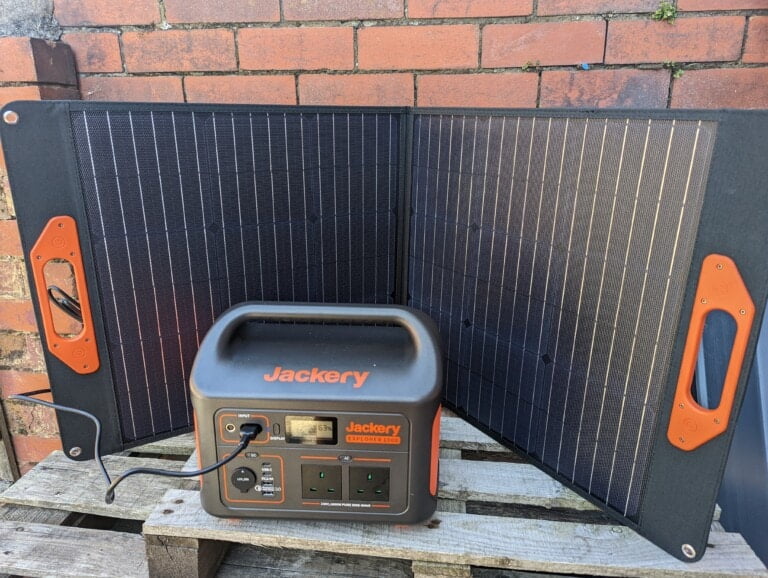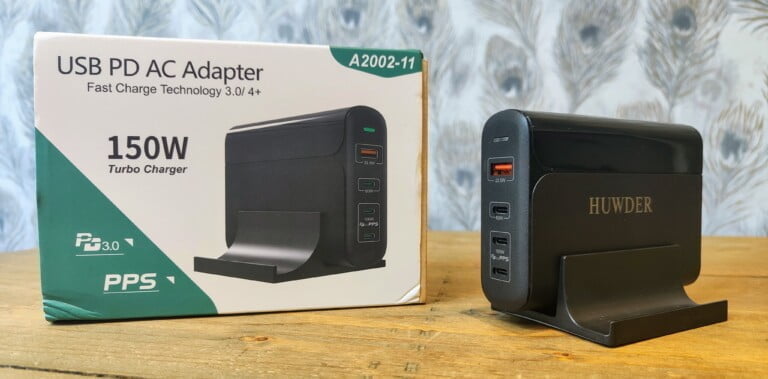Any links to online stores should be assumed to be affiliates. The company or PR agency provides all or most review samples. They have no control over my content, and I provide my honest opinion.
Anker has introduced its latest offering in the home energy storage market – the SOLIX X1 Hybrid Energy Storage System. This new product aims to provide homeowners with a flexible and efficient solution for managing their energy needs. Let’s examine the key features and specifications of this system.
Modular Design for Customisable Power

The SOLIX X1 system boasts a modular pack design that allows users to tailor their power capacity to their specific requirements. With capacities ranging from 5kWh to 180kWh, the system can accommodate a wide variety of household energy needs. This flexibility extends to the system’s outputs, which can be configured between 3.68kW and 36kW.
One of the standout features of the modular design is the ability to expand capacity without energy loss. Users can combine both old and new batteries, thanks to the auto-isolation process incorporated into the X1’s design. This feature not only promotes longevity but also offers a cost-effective upgrade path for users.
Sleek and Space-Efficient Design

Anker has prioritised aesthetics and space efficiency in the design of the SOLIX X1. The system is remarkably thin, measuring just 15cm in thickness. This slim profile makes it 40% thinner than many traditional home energy storage systems, allowing it to integrate seamlessly into various home environments without dominating the space.
Robust Off-Grid Capabilities
The SOLIX X1 is engineered to provide reliable backup power during outages. When a power cut occurs, the system switches to backup power in under 10ms, ensuring a stable power supply. This quick response time is crucial for maintaining the operation of essential household appliances and electronics.
Furthermore, the system’s InfiniPower™ technology allows it to continuously power at 1.05 times the rated power output. This additional capacity can be particularly useful during extended outages or in areas prone to frequent power interruptions.
Performance Across Extreme Temperatures
Anker has designed the SOLIX X1 to perform efficiently across a wide temperature range, from -20°C to 55°C. This broad operating range is achieved through several key features:
- Built-in thermal controller: Enables normal battery charging in cold temperatures when other batteries might struggle.
- Battery Management System (BMS): Adjusts the battery working condition to provide up to 15% more attainable power.
- InfiniPower™ technology: Allows the system to maintain unparalleled strength even at high temperatures of 55°C.
These features ensure that the SOLIX X1 can function effectively in various climates, making it a versatile choice for homeowners across different regions.
Energy Optimisation and Efficiency
The SOLIX X1 incorporates an energy optimiser that aims to maximise power usage efficiency. Anker claims that this feature can provide up to 2000kWh more power than traditional home energy storage systems over a 10-year period. This increased efficiency could potentially lead to significant savings on energy bills for users.
Technical Specifications
The SOLIX X1 is available in both single-phase and three-phase configurations, catering to different household setups. Here are some key technical specifications for both versions:
Single-Phase System
- Rated Output Power: 3.68/4.6/5/6kW
- Peak Output Power: 7.2/10/10/10kW (10s)
- Battery Capacity: 5kWh to 30kWh
- Battery Type: LFP (Lithium Iron Phosphate)
- Switch Time: <10ms
- Assembly Ingress Rating: IP66
- Noise: <40dB
- Operation Temperature: -20°C to 55°C
- Mounting Options: Ground or wall mount
- Warranty: 10 years
Three-Phase System
- Rated Output Power: 5/8/10/12kW
- Peak Output Power: 10/16/20/20kW (10s)
- Other specifications are similar to the single-phase system
Both systems use LFP batteries, which are known for their safety and longevity. The IP66 rating indicates a high level of protection against dust and water ingress, making the system suitable for various installation locations.
Comparison with Traditional Systems
When compared to traditional home energy storage systems, the SOLIX X1 offers several advantages:
- Thinner profile: 40% thinner than typical systems, saving space and improving aesthetics.
- Increased efficiency: Potential for 2000kWh more power over 10 years.
- Wide temperature range: Operates effectively from -20°C to 55°C.
- Quick response time: Switches to backup power in under 10ms.
- Modular design: Allows for easy capacity expansion and mixing of old and new batteries.
Potential Applications
The SOLIX X1 system could be particularly useful for:
- Homeowners looking to reduce their reliance on the grid
- Areas prone to frequent power outages
- Households with solar panel installations seeking to maximise their energy independence
- Users looking to optimise their energy consumption and reduce electricity bills
Conclusion
The Anker SOLIX X1 Hybrid Energy Storage System presents a flexible and efficient solution for home energy management. Its modular design, slim profile, and advanced features like the energy optimiser and wide temperature range operation make it a noteworthy contender in the home energy storage market.
However, as with any energy storage system, potential buyers should consider factors such as initial cost, installation requirements, and compatibility with existing home energy setups. It’s also worth noting that while the system promises significant efficiency gains, real-world performance may vary depending on individual usage patterns and local energy conditions.
As the demand for home energy storage solutions continues to grow, systems like the SOLIX X1 are likely to play an increasingly important role in how households manage and consume energy. The technology’s potential to enhance energy independence and efficiency could contribute to broader efforts towards sustainable energy use in residential settings.
I am James, a UK-based tech enthusiast and the Editor and Owner of Mighty Gadget, which I’ve proudly run since 2007. Passionate about all things technology, my expertise spans from computers and networking to mobile, wearables, and smart home devices.
As a fitness fanatic who loves running and cycling, I also have a keen interest in fitness-related technology, and I take every opportunity to cover this niche on my blog. My diverse interests allow me to bring a unique perspective to tech blogging, merging lifestyle, fitness, and the latest tech trends.
In my academic pursuits, I earned a BSc in Information Systems Design from UCLAN, before advancing my learning with a Master’s Degree in Computing. This advanced study also included Cisco CCNA accreditation, further demonstrating my commitment to understanding and staying ahead of the technology curve.
I’m proud to share that Vuelio has consistently ranked Mighty Gadget as one of the top technology blogs in the UK. With my dedication to technology and drive to share my insights, I aim to continue providing my readers with engaging and informative content.







